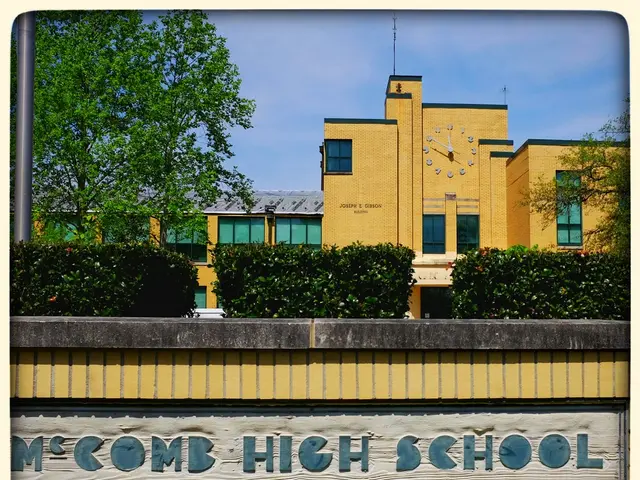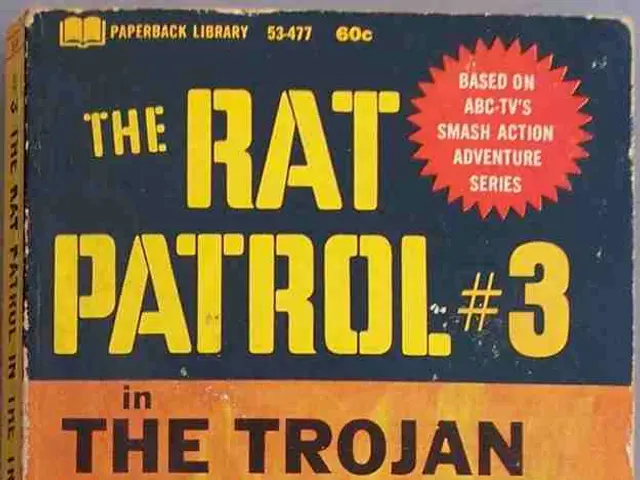Unveiling the Hidden: Women's Dominance in Ancient Britain's Past
Iron Age society's leadership was predominantly female, as uncovered through ancient DNA analysis.
Historians have been flipping the script on ancient Britain's narrative and this time, women are touted as the leading characters.
For years, historians have been under the impression that Iron Age societies were ruled by macho warriors and patriarchal power structures.
But a groundbreaking genetic study has put an end to that cliché.
A burial site in Dorset, England, has exposed a society where women, not men, were the cornerstones of lineage and power. DNA from 57 ancient individuals suggests a shocking reality – this was a matrilocal society, where descent was traced through mothers, and men joined their wives' families.
This discovery could revolutionize our understanding of gender roles in prehistory.
Genetic Evidence: Uncovering a Matrilineal Era
For over a decade, archaeologists from Bournemouth University have been digging up a remarkable burial site known as "Duropolis." Unlike most Iron Age Britons, who practiced cremation, the Durotriges tribe buried their dead in well-preserved cemeteries, revealing glimpses into their world like none before.
Using advanced DNA sequencing, researchers ** traces links across generations – and the findings were astounding. The community was overwhelmingly centered around maternal roots. Fathers barely left a trace in the genetic record, meaning women were the central figures in kinship, inheritance, and possibly governance.**
"This marks the first time this type of system has been observed in European prehistory," says Dr. Lara Cassidy, a geneticist at Trinity College Dublin.
"It suggests female social and political empowerment, which is rare in modern societies but may have been more widespread across time."
Women's Influence: Symbols of Power and Status
The evidence doesn't end at DNA analysis.
Grave goods buried with these Iron Age women reveal a story of authority and prestige. Unlike many other ancestral societies, where men's graves were filled with weapons and symbols of conquest, here ** women were interred with the most prestigious items –** including elaborate jewelry, Roman coins, and even mirrors.
A young woman from Langton Herring, one of the burial sites examined, was laid to rest with a mirror and jewelry featuring a Roman coin amulet. These were not simply adornments; they symbolized social standing, wealth, and even political influence.
Even Julius Caesar, during his first-century BC campaigns in Britain, took notice of the region's unique gender dynamics. Roman accounts describe British women taking multiple husbands and even commanding armies. ** Queens like Boudica and Cartimandua were not anomalies; they were a part of a long-standing tradition of female leadership.**
The Assumption of Patriarchy
For years, scholars assumed that most ancient European societies were male-dominated. But could earlier societies functioned differently?
Our current understanding of European societies is rooted in the Roman, Greek, and later medieval periods, when patrilineal and patriarchal systems were firmly entrenched.
But what if earlier societies operated on a different model? This new research suggests that Iron Age Britain might have preserved an older tradition of female-centric social organization – one that was slowly eroded by external factors such as Roman rule and Christianity.
Dr. Dan Bradley, co-author of the study, was taken aback by the deep roots of this system. "We were shocked to discover how extensively this phenomenon had spread across the island," he remarks.
In Yorkshire, another genetic study revealed that by 400 BC, a dominant maternal lineage had been established, resembling the findings in Dorset.
Matrilineal Societies: A Rarity in Prehistoric Europe, Or Not?
Although matrilineal societies exist in some cultures today, such as the Mosuo of China and the Minangkabau of Indonesia, they have been considered rare in prehistoric Europe until now.
Most known ancient European societies, from the Neolithic to the Bronze Age, were patrilocal, with women joining their husbands' families. The Durotriges challenge this assumption.
"This uncovers a previously hidden narrative of female leadership and power," says Dr. Miles Russell, an archaeologist at Bournemouth University. "Archaeology has long been shaped by modern opinions about gender roles and power structures. Now, with genetic evidence, we're revealing stories of women who reigned supreme."
Migration: Shaping Iron Age Britain
Beyond gender dynamics, DNA from these burials has revealed a surprisingly mobile population. Genetic data suggests that coastal areas in southern England experienced substantial migration during the Iron Age, most likely due to trade and cultural exchange across the English Channel.
"The evidence points to widespread cross-channel mobility," explains Dr. Cassidy. "This aligns with archaeological signatures of cultural exchanges and the spread of Celtic languages."
This means that Iron Age Britain wasn't an isolated land of warring tribes – it was a dynamic, diverse society, heavily involved in wide-reaching trade, cultural exchange, and migration.
The Implication for Our Understanding of the Past
This research extends beyond rewriting the story of an ancient community – it serves as a reminder that history is full of surprises.
For too long, historians have filtered the past through 21st-century lenses, making assumptions about gender roles and social structures that may not be accurate.
Now, with the power of ancient DNA, we're unearthing missing stories – stories of women who reigned, ruled, and shaped their societies in ways we're only just beginning to understand. As scientists continue to decipher secrets from the past, one thing is clear: history is far more complex, and far more captivating, than we ever imagined.
Enrichment Caveat:
The enrichment data cautions that the genetic evidence supporting matrilineal societies in prehistoric Europe, particularly Iron Age Britain, is not conclusive. Modern assumptions about gender roles and ancient societies should be questioned, and further research is required to fully understand historical social structures.
- This discovery could challenge our assumptions about gender roles in prehistory, signaling a potential dominance of women, not men, in the lineage and power structure of ancient societies.
- The genetic study reveals that the community in Dorset was predominantly centered around maternal roots, with women serving as the central figures in kinship, inheritance, and possibly governance.
- Unlike many other Iron Age societies, women were interred with prestigious items, indicating social standing, wealth, and political influence.
- Queens like Boudica and Cartimandua were not anomalies; they were a part of a long-standing tradition of female leadership in ancient Britain.
- Scholars previously assumed that most ancient European societies were male-dominated, but the new research suggests that Iron Age Britain might have preserved an older tradition of female-centric social organization.
- Matrilineal societies, such as the Mosuo of China and the Minangkabau of Indonesia, have been considered rare in prehistoric Europe, but the findings in Dorset challenge this assumption.
- The evidence from these burials also reveals a surprisingly mobile population, suggesting substantial migration during the Iron Age due to trade and cultural exchange across the English Channel.
- This research serves as a reminder that history is full of surprises, and Historians have filtered the past through 21st-century lenses, making assumptions about gender roles and social structures that may not be accurate.
- As scientists continue to decipher secrets from the past, one thing is clear: history is far more complex, and far more captivating, than we ever imagined.
- Investing in scientific research is crucial to uncovering the untold stories of history, especially those that shed light on the role of women in shaping societies.
- This study could have implications for personal-growth and career-development of young scholars, inspiring them to delve into the mysteries of the past and contribute to the field of environmental-science.
- The findings might also have been of interest to entrepreneurs in the business sector, especially those interested in lifestyle, fashion-and-beauty, and food-and-drink, as they explore the historical underpinnings of modern cultural dynamics.








